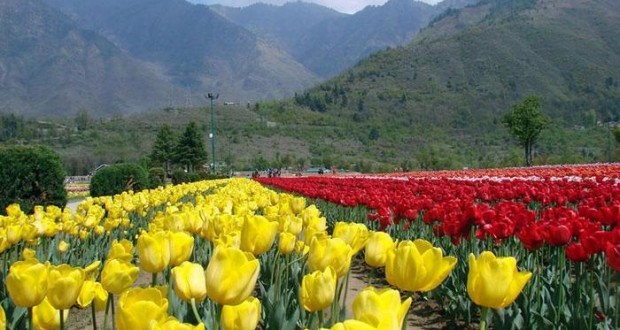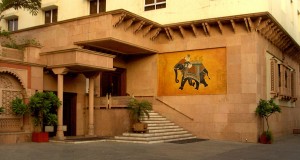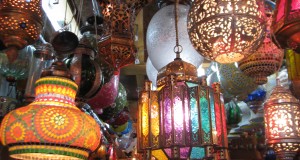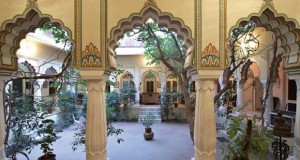Review Overview
Gardens and Lakes (by car or bus, morning; by shikara, afternoon) Nehru Park-Shalimar-Nishat Bagh-Dal Lake-Floating Gardens
Set out early in the morning for the Mughal Gardens. There are three of them worthy of note: the Shalimar, the Nishat Bagh and the Naseen Bagh, but only the first two are worth going out of your way for. In spring and autumn these pleasure gardens are a continual delight of terraces, water-channels, fountains and cascades. Out of season (before April) they are as bleak as any city park on a rainy day.
The dawn mist clings to the ghostly hulks of houseboats, projecting like irregular rows of dominoes along the waterfront. The soaring mountain backdrop is a stately li ne off snow-capped peaks, glowing rose-pink by the light of the morning sun. In Srinagar this is the most beautiful time of day.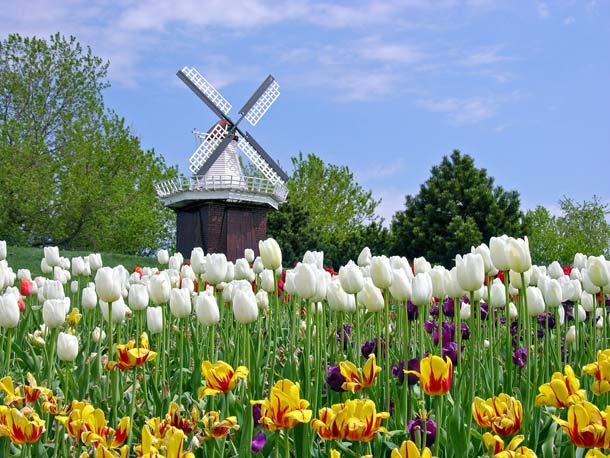
By bus, it’s a half-hour journey (15 km: 91/2 miles) up to Shalimar Gardens at the top cf Dal Lake. This beautiful ‘Garden of Love’ was conceived by the Emperor lahargir as a private recreation area for his wife Nur Jahan in AD 1616. Like the other Mughal gardens, it is open from sunrise to sunset. In the evenings from May to Septembers, it offers a picturesque ‘son et lumihre ‘, in English (timings are variable No check at the tourist office). On Sundays, the beautiful fountains are turned on.
Shalimar is a sophisticated garden comprising four shallow terraces, each rising above the other, and a canal—lined with polished stones and supplied with water from Harwan Lake—running through the centre. The top terraces used to be reserved for tie royal ladies. The garden is full of clipped hedges, flower-beds and avenues of ch nar trees. In the centre, there is a small marble palace.
From Shalimar, drive on to Nishat Bagh, 5 km (3 miles) down the road. This ‘Garden of Bliss’ was laid out for the public in AD 1633 by Nur Jahan’s brother, Asaf Khan. It is a bigger and better version of Shalimar, with steep escalating terraces, lovely walkways, waterfalls, pavilions, a popular picnic park and superb views over the lake. In the distance, you can see Hazratbal Mosque ( with its white dome) against a glorious backdrop of the Zabarwan mountains. Nishat Bagh has a total of 13 terraces, and is the largest Mughal garden of all.
In the afternoon, take a relaxing shikara ride round Dal Lake. This is the high spot of any visit to Srinagar. A trip round the sou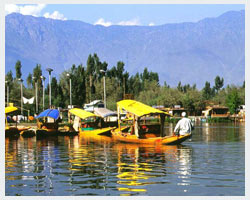 th section of Dal Lake, encompassing the Floating Garden, Nehru Park and Char Chinar, will take 3 hours. If you want to visit the northern section as well (another Floating Garden, then Sona Lank, Hazratbal Mosque and Naseen Bagh), it will take 5 to 6 hours. A rather longer but very rewarding day-trip by shikara (6 hours there, 2 hours’ stay, 3 hours return) is up to the bird sanctuary on the northwest of Nagin Lake, with miles upon miles of lotuses and glorious mountain scenery. Once you have climbed into the low-canopied, exotically decorated shikara, and sunk into the plush silk-cushioned seats, prepare yourself for the only non-relaxing part of the trip—a sudden, unexpected onslaught from an armada of ‘shikara shops’. I hey come from the banks of Boulevard Road; first one, then two, then a whole convoy of wildly paddling boats manoeuvre into position alongside. They are manned by grinning, waving, hallooing traders with unlikely names like ‘Tasty Tailors’, ‘ Crocodile’ and ‘Nick the Jeweller’ (Crocodile’s cousin), and they are determined to sell you something, anything.
th section of Dal Lake, encompassing the Floating Garden, Nehru Park and Char Chinar, will take 3 hours. If you want to visit the northern section as well (another Floating Garden, then Sona Lank, Hazratbal Mosque and Naseen Bagh), it will take 5 to 6 hours. A rather longer but very rewarding day-trip by shikara (6 hours there, 2 hours’ stay, 3 hours return) is up to the bird sanctuary on the northwest of Nagin Lake, with miles upon miles of lotuses and glorious mountain scenery. Once you have climbed into the low-canopied, exotically decorated shikara, and sunk into the plush silk-cushioned seats, prepare yourself for the only non-relaxing part of the trip—a sudden, unexpected onslaught from an armada of ‘shikara shops’. I hey come from the banks of Boulevard Road; first one, then two, then a whole convoy of wildly paddling boats manoeuvre into position alongside. They are manned by grinning, waving, hallooing traders with unlikely names like ‘Tasty Tailors’, ‘ Crocodile’ and ‘Nick the Jeweller’ (Crocodile’s cousin), and they are determined to sell you something, anything.
Reeling under a simultaneous bombardment of saffron men, papier-mache men, Buddhist-bell men and kebab-stick men, you will deed to run this exhilarating gauntlet with a very clear idea of what you do or don’t want to buy. The very best purchase is red saffron, followed by semi-precious stone necklaces (jade, tiger-eye and turquoise) and pretty papier machê boxes. There’s a flower man who sells beautiful hyacinths, and flower seeds. But be careful. The ready smiles and self-effacing sales patter conceal some of the sharpest business minds around. You can buy practically anything on Dal Lake: cigarettes, chocolate, Tibetan prayer-wheels, Kodak film, and toilet rolls. There’s even a floating fruit market. But you have to be quite firm when you don’t want to do business. Otherwise, you’ll never get beyond the Boulevard.
Past all the slzikara salesmen, it’s a quiet, undisturbed ride up to Nehru Park. Thins is a small island at the foot of Shankaracharya Hill: a popular spot for evening balks and prettily illuminated at night. The shikara drops you here for a while; to have a drink at the small restaurant and enjoy views over glass-smooth Dal Lake, with Bari Mahal (a Buddhist monastery converted into a School of Astrology by Dara Shikoh,Shah Japan’s son) up in the hills, and below it the Hotel Oberoi Palace. Five-star ‘deluxe’ houseboats parked nearby bear am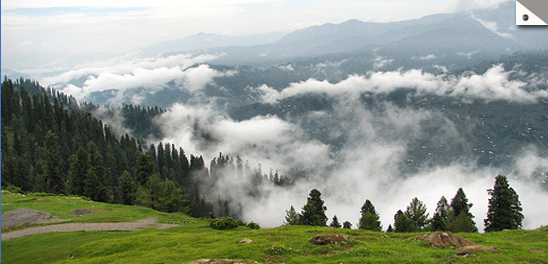 using names like Noah’s Ark, New Neil Armstrong, King’s Thrown. And Dongola Super Duper Deluxe with Water Skiz. Shikara gondolas drift past with honeymooning Indian couples. They have titles like Inc ian Dream Disco Ha-Ha, and are followed by young lads propelling small dugga-boata with heart-shaped paddles. These budding entrepreneurs pause briefly to offer o a Pepsi or a choc-ice, then continue on.
using names like Noah’s Ark, New Neil Armstrong, King’s Thrown. And Dongola Super Duper Deluxe with Water Skiz. Shikara gondolas drift past with honeymooning Indian couples. They have titles like Inc ian Dream Disco Ha-Ha, and are followed by young lads propelling small dugga-boata with heart-shaped paddles. These budding entrepreneurs pause briefly to offer o a Pepsi or a choc-ice, then continue on.
Your boat will visit next the Floating Gardens, drifting silently through a wonder land of winding water-corridors carpeted with meadow-green lichen and pink-red water lilies. The ‘old market’, a floating bazaar which moves its site daily, is to be found in this quarter, and your shikara-man will gladly guide you to the best places for shopping (bear in mind, however, his commission) before slowly steering you homeward. Back at base, your houseboat owner will almost certainly be anxiously waiting for you, with a hot shower and a substantial meal prepared. If he isn’t, change your houseboat.

